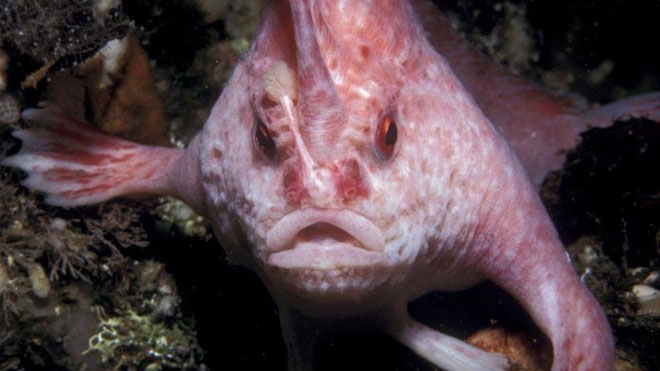A Rare “Walking” Pink Sea Star Discovered for the First Time in 22 Years on the Coast of Tasmania
The last sighting of the pink sea star was in 1999 when a diver in Tasmania claimed to have found one. This species, considered one of the rarest in the world, has only been observed four times before.
Concerned for the survival of the pink sea star, Australian authorities recently added it to the list of endangered species, according to the BBC.
However, researchers have reported that they found the pink sea star once again in images captured by an underwater camera earlier this year in a marine park.
New images show the pink sea star in deeper and broader waters than previously thought.
Scientists once believed this species lived in shallow waters in bays, but it has now been found at a depth of 150 meters off the southern coast of Tasmania.
“This is an exciting discovery that brings hope for the long-term survival of the pink sea star, as it clearly has a wider habitat and distribution than previously thought,” said marine biologist Neville Barrett, an associate professor at the University of Tasmania and the lead researcher.
True to its name, the pink sea star has distinctive pink fins that resemble hands, which it uses to “walk” along the ocean floor.

New discovery gives scientists a rare opportunity to explore the pink sea star. (Photo: BBC).
Barrett’s research team deployed a baited camera to the seabed of the Tasman Fracture Marine Park in February to survey corals, lobsters, and various fish species in the area.
This conservation park, which is roughly the size of Switzerland, is known for its long fissure in the Earth’s crust, allowing researchers to discover marine life at depths exceeding 4,000 meters.
A research assistant reviewing footage in October spotted the unusual creature among a multitude of larger animals attracted to the bait.
“I was watching one of the videos and saw a small fish appear on a rocky outcrop that looked a bit strange. I looked closer and could see its tiny hands,” said Ashlee Bastiaansen from the Institute for Marine and Antarctic Studies at the University of Tasmania, in an interview with ABC.
The footage shows the fish, measuring 15 cm, emerging from a rocky ledge after being disturbed by a lobster.
Initially curious about the commotion, the fish observed the scene for a few seconds before swimming away.
“This has provided us with really amazing footage… to clearly identify this species and measure their size,” Barrett told ABC.
“We are very excited to be able to use a range of techniques and really see the importance of these deeper habitats for such a rare species.”
The pink sea star is one of 14 species of sea stars observed around Tasmania, the island south of the Australian mainland.


















































